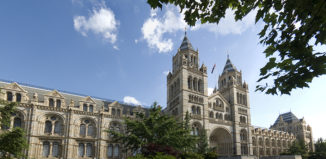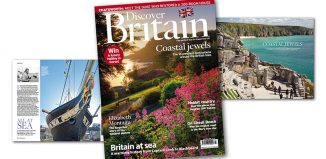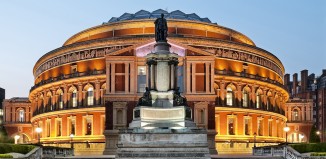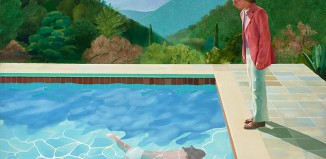Top 10 eccentric collections
Dotted across the country are weird and wonderful collections of all manner of ephemera, amassed by generations of enthusiasts. Margaret Powling went in search of the nation’s quirkiest hoards
Snowshill Manor
Near Broadway, Gloucestershire
Inspired by his grandmother’s Chinese cabinet, Charles Paget Wade saved his childhood pocket money to buy curios of his own. His family motto, ‘Let nothing perish’, couldn’t be more appropriate for a man who spent his life amassing a spectacular collection of everyday items, as well as objects from around the world. He filled his house, Snowshill Manor in the Cotswolds, with so many things, including Samurai armour, automatons, clocks and toys, that he decamped to the adjacent cottage, reserving the manor for his collections and for entertaining. Today, the thousands of items are displayed just as Mr Wade intended: without labels.
Tel: 01386 842 814
www.nationaltrust.org.uk/snowshill-manor
Museum of Brands, Packaging and Advertising
Notting Hill, London
Robert Opie began collecting packaging at the age of 16 with a packet of Munchies, and built up a collection that now extends to all aspects of daily life. There are more than 12,000 original items on display, which tell the remarkable story of more than 150 years of British consumer society. It is a journey from Victorian times to the present day, which reveals how brands have become entwined with our lives. The film In Search of Our Throwaway History is a remarkable story of our consumer age, and will be available on DVD at the museum and online from autumn 2012.
Tel: 020 7908 0880
www.museumofbrands.com
Mr Straw’s House
Worsksop, Nottinghamshire
In a house in Worksop, it is forever 1923, the year that the Straw family bought their semi-detached house with the proceeds from Mr Straw senior’s successful grocery and seed merchant business. They threw little away and chose to live without many of the modern comforts that we take for granted. Costing £767, with a further £100 spent on decoration, the house was fashionable, with carpets and wallpapers from Sanderson in London. When their mother died in 1939, the two sons, Walter and William, left everything exactly as it was, so the house is filled with food packaging in the cupboards, clothes in their parents’ bedroom and piles of papers and sheet music on the piano.
Tel: 01909 482 380
www.nationaltrust.org.uk/mr-straws-house
The Bill Douglas Centre
Exeter, Devon
One of Britain’s largest public collections of ephemera relating to the history and pre-history of cinema is housed at the Bill Douglas Centre. A film-maker, Bill assembled the collection of items with his friend, Peter Jewell. Visitors can see everything that is associated with film and television, from cigarette cards, games, letters and slides, to optical toys, photographs, posters, programmes, sheet music and transparencies. They illustrate the development of popular entertainment from the late 18th century to present day. The collection is based around audiences experience of the moving image and very deliberately ranges from the sublime (an original Lumière cinématographe) to the ridiculous (Mickey Mouse telephones).
Tel: 01392 724 321
www.exeter.ac.uk/bdc
Bicton Countryside Museum
East Budleigh, Devon
Since 1939 farming and rural life have undergone tremendous changes, brought about mainly by the disappearance of the horse and its replacement by the tractor. Before artefacts of the past vanished completely, Mr NDG James, land agent to Lord Clinton, began collecting items from all over the country. Now housed at Bicton, this collection includes traction engines, vintage machinery, traditional tools, tractors and domestic memorabilia, which trace the history of rural life over the last 250 years. There are also displays of ancillary industries that include thatching, wheelwright, blacksmith, dairy and cider production. This year a new section has opened, showing vintage motor cycles.
Tel: 01395 568 465
www.bictongardens.co.uk
The Clive Museum
Powis Castle, Welshpool, Powys
Robert Clive was described as ‘penniless and in debt’ when he first arrived in India, in 1743, as a clerk in the East India Company, but within 20 years he had become one of the richest men in England. This collection of weapons, ivories, textiles and ornamental silver from India was first kept by Clive at his Surrey home, Claremont, but with additional pieces collected by his son and daughter-in-law, Henrietta Herbert, it came to Powis at the end of the 18th century. A particularly rare and beautiful object, is the
jewel-encrusted Tipu Sultan’s sword. Sadly, when Clive returned to England in 1767, he faced a parliamentary inquiry into corruption allegations. He was cleared of any wrongdoing, but he committed suicide in 1774.
Tel: 01938 551 944
www.nationaltrust.org.uk/powis-castle
The Carlisle Collection of Miniature Rooms
Nunnington Hall, North Yorkshire
Mrs FM Carlisle began collecting antique miniatures in 1921. As her collection grew, special settings were made to house them and furnishings were added to create realistic rooms. In 1933 she began to commission craftsmen to make rooms and furniture, built to scale, usually one-eighth of natural size. The Carlisle Collection is less doll’s house and more accurate re-creations of period settings in the manner of
18th-century scale models, which were intended more for adult pleasure than child’s play. It consists of 22 individual rooms including a William and Mary parlour, Queen Anne drawing room, a Chippendale library, Palladian hall and Georgian bedroom.
Tel: 01439 748 283
www.nationaltrust.org.uk/nunnington-hall
Brooklands Museum
Weybridge, Surrey
Brooklands motorcar race track was the brainchild of wealthy landowner, Hugh Fortescue Locke-King. Between 1906-7 he built – at his own expense and on his own land – the world’s first purpose-built motor-racing circuit. “Visitors get the chance to see and smell the cars and motorcycles that pounded the track, or take a virtual tour aboard a real Concorde,” says Paul Stewart, Marketing Manager. In school holidays, open-top cars take visitors up the steep Test Hill, along the banked race track, and back to the paddock. Brooklands has become a destination for ‘vintage’ events which, unapologetically, bring the past to life. It houses a remarkable collection, but here the whole is greater than the sum of its parts.
Tel: 01932 857 381
www.brooklandsmuseum.com
Museum of Childhood
Sudbury Hall, Derbyshire
At Sudbury Hall, a series of eight galleries depicts the lives of children from Egyptian times to the present day. Visitors will be fascinated with the activities, interactive displays and a multitude of toys which will bring out their inner child. The collection – which includes over 1,500 dolls – contains many games and puzzles, soft toys, books, textiles and costumes, all of which provide fun, fascination and challenges for people of all ages. The large object store holds items too large for a collector’s acid-free box – these include childcare items such as cots and prams, rocking horses and dolls’ houses. Younger visitors may even try out the chimney sweep climb to experience what life as a little sweep might have been like.
Tel: 01283 585 305
www.nationaltrust.org.uk/sudbury-hall-and-museum-of-childhood
The Bowes Museum
Barnard Castle, Co Durham
John Bowes, a wealthy businessman, and his French wife, Joséphine, embarked on something quite remarkable in the 19th century: to build a museum in the French chateau style, in County Durham. The foundation stone was laid in 1869 and as the building grew, so did the Bowes’s collections. Of particular interest is the Silver Swan musical automaton, which dates from 1773. The life-size swan is controlled by three separate clockwork mechanisms. It rests on a stream made of twisted glass rods interspersed with silver fish; when the mechanism is wound up, the glass rods rotate, the music begins and the swan twists its head from side to side, appears to preen its back and then bends down and catches a fish. Quite magical!
Tel: 01833 690 606
www.thebowesmuseum.org.uk







